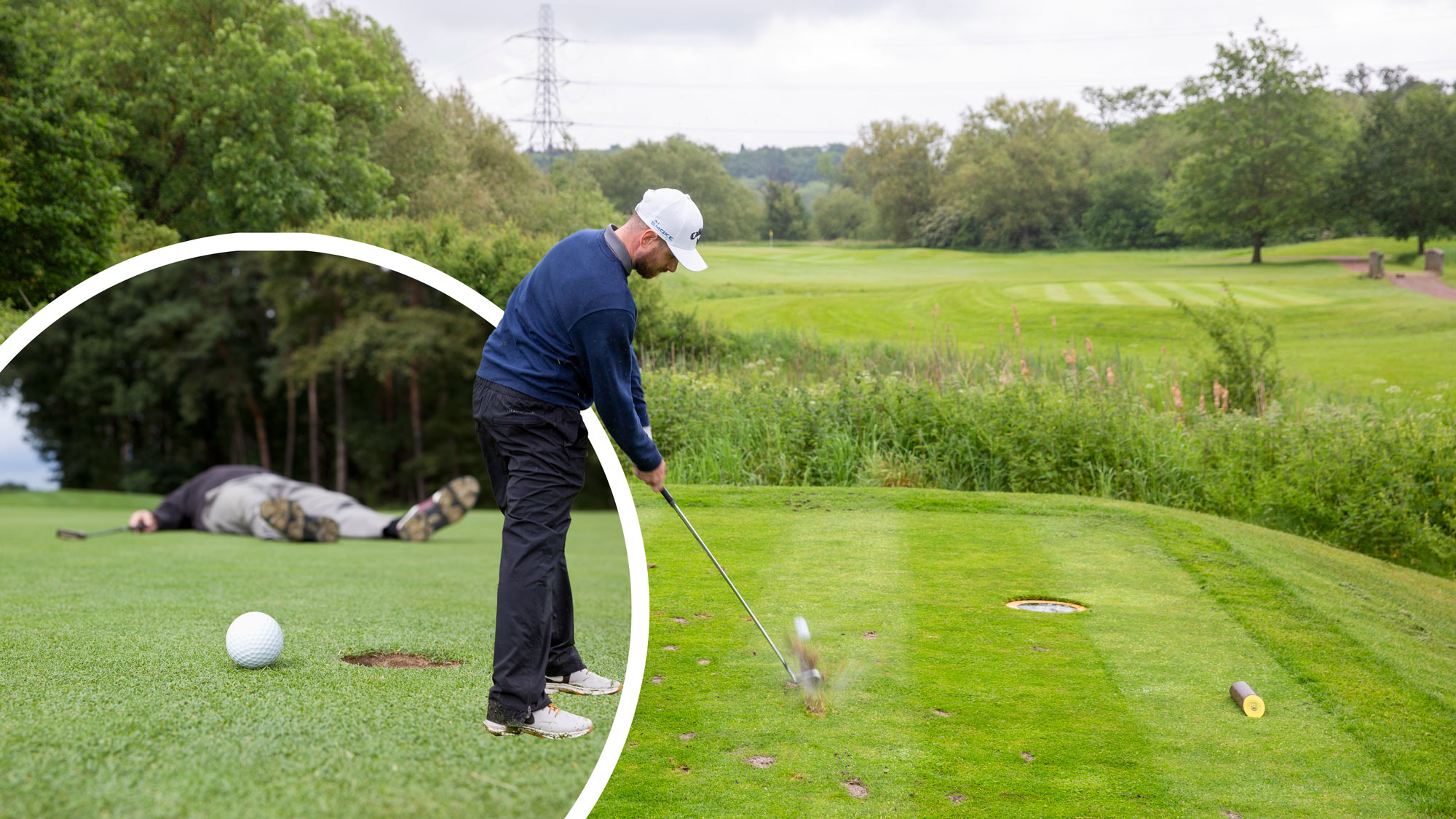Are You Tired Of Your High-Handicap Golfer Status? These 4 Substantiated Tips Are Your Salvation
Being a high-handicap golfer is not easy, with consistency being difficult to establish and progress hard to come by... until you try these four simple tips!


Joel Tadman
As a high-handicap golfer myself, I can truly relate to the struggle experienced by many in the pursuit of progress.
The optimist in me wants to learn how to break 80, much like many other amateur golfers who are much more competent than I, but in reality I would be happy with being able to shoot lower scores and reduce my handicap into the teens.
So, when I came across this excellent Instagram video from Golf Monthly Deputy Editor Joel Tadman, I was so excited to head out onto the course to try his great golf tips for myself.
Using the latest Shot Scope Data, Joel uses his extensive playing experience (as a 3-handicapper) and his wealth of industry experience gained over the last decade to assist me and other high-handicap golfers to shoot lower scores with four simple tips...
4 Tips For High-Handicap Golfers To Shoot Lower Scores

Joel has worked in the golf industry for over 12 years covering both instruction and more recently equipment. He now oversees all product and video content here at Golf Monthly, managing a team of talented and passionate writers and presenters in delivering the most thorough and accurate reviews as well as producing engaging, thought-provoking and helpful video content aimed at anyone with an interest in golf.
What Is A High-Handicapper?
Although there is some debate over the exact parameters, typically a high-handicapper in golf is a player with a handicap index of 20 or more.
The maximum handicap a player can receive is 54, with the majority of golfers falling into the high-handicap bracket.
4 Tips For High-Handicappers To Shoot Lower Scores
The video below outlines all four of my top tips for high-handicap golfers to shoot lower scores, utilising the excellent data and insights provided by Shot Scope.
Get the Golf Monthly Newsletter
Subscribe to the Golf Monthly newsletter to stay up to date with all the latest tour news, equipment news, reviews, head-to-heads and buyer’s guides from our team of experienced experts.
I have also summarised my thoughts below, for anyone who prefers to read and perhaps revisit this advice.
As always, I'd love to hear if these tips have helped you to achieve your goal. Drop us a comment at the bottom of this page and we will share some of your best success stories with our audience in another article this season.
A post shared by Golf Monthly (@golfmonthly)
A photo posted by on
1. Choose The Right Equipment
Often, the downfall of many amateur golfers (including high-handicappers) is they don't choose the correct equipment to give them the best chance of success on the golf course.
One of the best things a high-handicap golfer can do it invest in a 5-wood, as it's much more forgiving than a 3-wood and a 3-hybrid.
This is also a much better option for getting the ball up in the air than a long iron, but how do you know which model is best?
Choosing the best fairway woods for high-handicappers couldn't be easier with our extensive guide, helping you to shoot your best scores on the course this season.
2. Play For Bogey On Par-5s
According to the latest Shot Scope data, a 20-handicap golfer has a scoring average of 6.3 on par-5 holes.
If you compare that to the average of a 15-handicapper (6.0), it's clear to see how beneficial banking a bogey could be and how damaging those doubles are to your momentum.
My best advice would be to break the longer holes down into manageable chunks, perhaps aiming to hit the green in four easy swings while also navigating away from the trouble en route.

Break the par-5 holes down into manageable chunks and accept that bogey is a good score
3. Leave The Sand Wedge In The Bag For Chipping
So many high-handicap golfers inadvisedly reach for the sand wedge when chipping around the greens, but that could be costing you precious shots.
The Shot Scope data suggests that a 20-handicappers up and down percentage massively drops when opting for the sand wedge (18% success), but rockets up with a 9-iron (34% success) or even better... the putter (66%).
The data doesn't lie, so when you can get the flat stick on the back of the ball with a clear run to the hole - don't be too cute. It's time for the Texas wedge to take the glory.
Bonus Tip:
If you have a bunker, water or stretch of rough to clear between you and the flag, opt for a club that will favour being long rather than short.
Being at the back of the green with a long putt is much more preferable than a penalty drop or difficult short game shot.
4. Stop Leaving Your Putts Short
The data indicates that a 20-handicapper leaving 55% of their missed putts short of the hole. This might seem obvious, but a putt that doesn't reach the hole is never going to go in. Give yourself a chance with every attempt and never leave another putt short.

Give every putt a chance - after all, a short putt is never going to go in!
Key Takeaways
There are plenty of data-driven ideas there to help you shoot lower scores, so below I have summarised these into four key takeaways...
- Invest in a 5-wood to increase forgiveness and improve ball striking
- Play for a bogey on par-5 holes - a six would be a great result for your handicap
- Putt where you can around the green, and if you need to chip the ball go for a lofted-iron over a sand wedge
- Avoid leaving putts short - give them all a chance with a more ambitious stroke
FAQs
What Is My Handicap If I Regularly Break 90?
This is a difficult question to answer, as there are a variety of factors that contribute to a player's handicap index. If a player shoots 90 consistently they are typically believed to be around an 18-handicap, which is a great goal to have for most high-handicappers.
Breaking 90 consistently would therefore see you below that index, but exactly how low will depend on the scores, the course and the ratings.
How Many Birdies Does The Average 20-Handicapper Make?
Considering how many birdies the average golfer makes per round, we often have inflated and unrealistic expectations of our scoring.
According to the latest Shot Scope data, the average 20-handicapper makes around 0.36 birdies per round. That's half the amount of a 10-handicap golfers (0.72) and just over one every 54-holes.
So, the next time you miss a birdie putt on the course, don't beat yourself up too much. They will come if you continue to work on your game.

Barry joined Golf Monthly in January 2024, and now leads the instruction section across all platforms including print and digital. Working closely with Golf Monthly's Top 50 Coaches, he aims to curate and share useful tips on every aspect of the game - helping amateurs of all abilities to play better golf. A member at Sand Moor Golf Club in Leeds, he looks forward to getting out on the course at least once a week in the pursuit of a respectable handicap.
Barry is currently playing:
Driver: Benross Delta XT Driver
Hybrid: TaylorMade Stealth 4 Hybrid
Irons: Benross Delta XT 5-PW
Wedges: TaylorMade RAC 60, Callaway Jaws MD5 54
Putter: TaylorMade Spider Tour
- Joel TadmanDeputy Editor
You must confirm your public display name before commenting
Please logout and then login again, you will then be prompted to enter your display name.
-
 PGA Tour Truist Championship Creator Classic Line-Up And Format Revealed
PGA Tour Truist Championship Creator Classic Line-Up And Format RevealedThe PGA Tour has announced the line-up for the second Creator Classic ahead of the Truist Championship - with YouTubers from outside golf taking on the challenge
By Paul Higham
-
 How Many LIV Golfers Have Qualified For the PGA Championship?
How Many LIV Golfers Have Qualified For the PGA Championship?Phil Mickelson and Brooks Koepka are just two of 13 players from LIV Golf who will be able to tee it up at the PGA Championship at Quail Hollow
By Paul Higham
